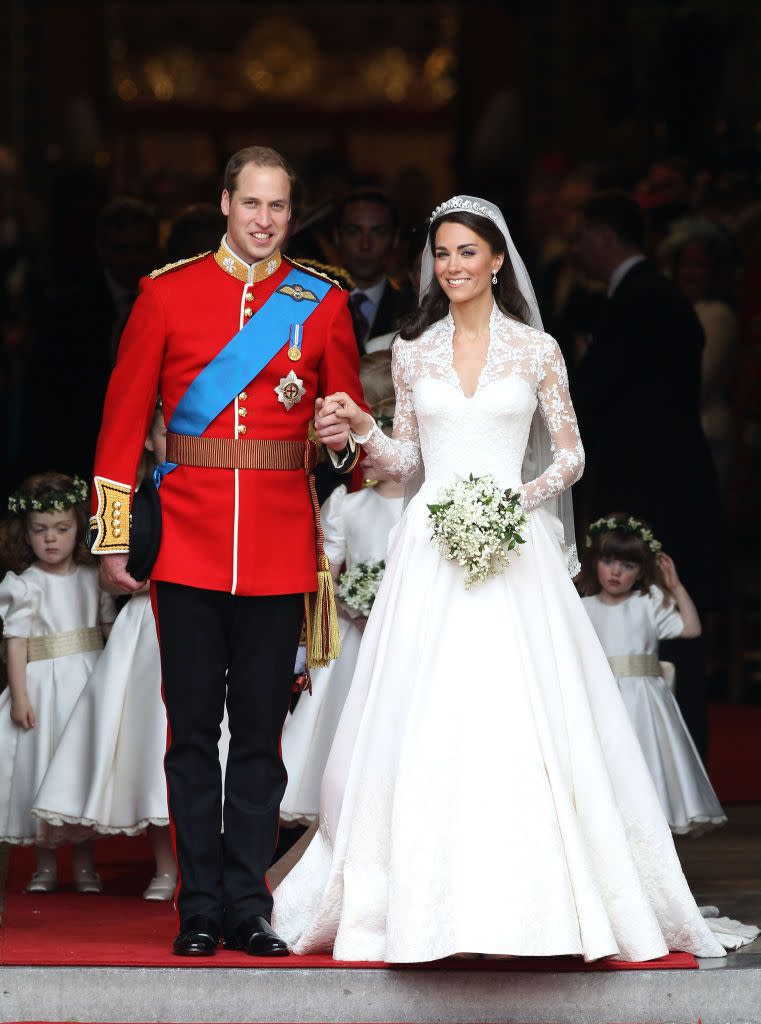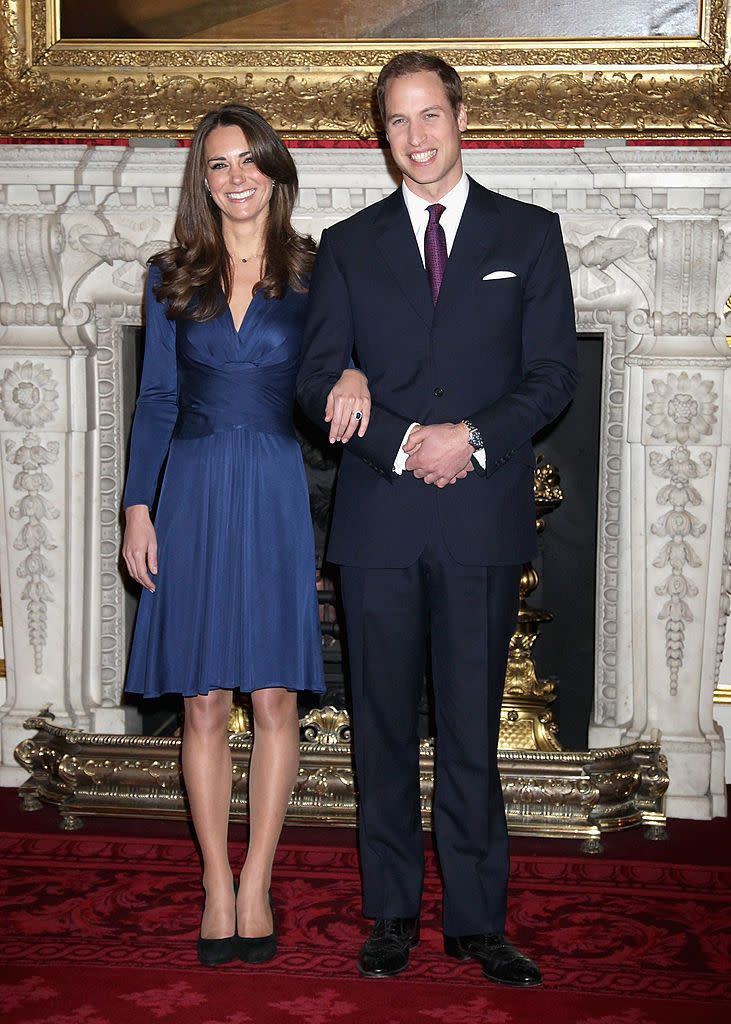As Support For The Royal Family Wanes, What Will The Future Of Royal Fashion Look Like?

So much of what is understood about the British royal family comes from its image. That of castles and palaces; of horse racing and garden parties; of Land Rovers and country pursuits; of tax-payer funded endeavours and flag-wielding walkabouts. Which is why what they choose to wear matters.
On the fashion front, the reputation that it’s established isn't one of cutting-edge couture, but of trusty favourites, of repeated wears and a heady mix of high street, heritage and buzzy designer names interspersed with a mix of countryside casual and pitch-perfect elegance, with details for diplomacy and a colour palette that helps them stand out among a crowd.
As the monarchy enters a new era, following years of being the subject of tabloid drama and amid a national cost of living crisis, its image has never been more important and under closer scrutiny. King Charles, who will be officially crowned at Westminster Abbey on Saturday May 6, has long expressed the desire that his reign will consist of a 'slimmed down' A-team, with his long-standing environmental awareness and campaigning set to be front and centre.
By now we all know of the royal's love of Savile Row’s Anderson & Sheppard, and how he'll frequently replace soles on shoes he's owned long before the millennium. However, it’s rarely his clothes that fill the column inches, rather those of his family members – more specifically of the women in his life.

Since Charles' daughter-in-law, Kate Middleton, joined the royal family aged just 29 in 2011, her every button, blouse and ballgown has been observed, documented and recorded. She's become a poster girl for a type of dressing that feels accessible, familiar and recognisable, while still maintaining an air of aspiration and regal credentials that more than hint at her HRH title and the privileges that come with it. Since acquiring a new title following the Queen's passing, the Princess of Wales has made subtle shifts away from her newlywed trousseau of LK Bennett court shoes and staid shift dresses to exhibit a confidence through a sleeker silhouette more akin to a City executive, most recently from the likes of Eponine London and Catherine Walker.
Kate, like her father-in-law and many of us who champion the importance of sustainability, is known for her outfit repeating, which is often celebrated with comical fanfare by the British press. But it’s not just individual items she turns to time and time again, but the roll call of trusted and loyal designers who collaborate with her.
However, dressing the Princess of Wales comes with its own diplomacy that's unaffordable to most. In addition to ascending to heir apparent following the Queen's death in September 2022, Prince William also inherited the £1 billion-valued Duchy of Cornwall, which is widely believed to fund his wife's wardrobe. Though celebrities are often known to accept gifts and freebies from designers, the royal family doesn't follow suit despite their notoriety (though it’s often assumed that heavy discounts or wholesale costs are honoured and applied – a privilege in itself that passes most by).
The names of the designers that HRH has become loyal to in recent years will roll off the tongue of anyone with a minor interest in the royals or fashion at large. Roksanda, who has been known to stage her shows in the Serpentine Pavilion – aka Kate’s Kensington Palace back garden – has been a mainstay since she took on royal duties; Emilia Wickstead’s contemporary take on debutante dressing is another favourite, while a floral suit from Erdem worn in March cemented his status among her preferred creatives.

And then there is, of course, Alexander McQueen. The brand created by British fashion’s enfant terrible that found itself at the heart of constitution when Kate opted for a custom gown, designed by its current creative director Sarah Burton, for her April 2011 nuptials. The label has since become a regular go-to for the Princess, who chooses bespoke pieces or altered ready-to-wear for public appearances and international tours.
Those that fall into the bracket of Kate’s preferred designers have certainly benefited from 'The Kate Effect', from increased sales and brand awareness across the globe. But does a shift in the monarch and in the way that Britons at large feel about the royal family, coupled with the growing transparency surrounding its funding amid the cost of living crisis, mean that a change may be on the horizon for the way in which designers collaborate with the royals?
A recent YouGov poll carried out for the coronation period revealed that support for the monarchy is down, with young Britons differing from their elders significantly. On average, 58% of Britons say the monarchy is good for Britain, but that figure drops to just 32% when it comes to those aged between 18 and 24.
As we move into the new Carolean era, it's safe to assume that some brands - whether senior royals have worn them prior to the coronation or not - will be questioning whether their alignment with the royals will be seen in such a positive light.
'The Kate Effect' came into force when Prince William and Kate announced their engagement on November 16, 2010. Many will remember the sapphire blue wrap dress that the then 28-year-old Kate Middleton chose to wear for the occasion, clearly chosen to coordinate with the Garrard Ceylon sapphire ring which once belonging to her mother-in-law, the late Princess Diana. But few might be aware of the not-so-sweet impact of the dress' instant fame. Designed by Issa, the dress instantly catapulted the London-based brand to new levels of recognition and would-be fortune. But less than five years later the label was forced to close.

Designer Danielle Helayel launched the brand in 2006 and showed at London Fashion Week for the first time that year. Following the engagement announcement Helayel spoke of her surprise to hear that the one-day Queen would wear Issa for the momentous occasion. Speaking in 2017, Helayel admitted: 'Issa was a niche brand; we had a loyal following, but in 2008 and 2009 we were in serious financial trouble. When Kate wore that dress everything changed.' The demand that ensued offered a tricky business proposition where Helayel was unable to finance production to align with the demand.
In recent years diplomatic dressing has moved beyond wearing hues that pay homage to national flags, as seen in the likes of Queen Elizabeth and Princess Diana's days, to now involving royals opting to wear pieces from brands, often independent, based in the region a royal is visiting. The rewards felt by such emerging labels are often seismic, with an expansion in production usually needed in the similar vein of Issa the moment the Windsors head back to the Royal Boroughs. Strathberry, an Edinburgh-based handbag label founded by Guy and Leeanne Hundleby in 2013, is one such brand and has been 'worn' by Kate and her sister-in-law, Meghan Markle.
The Hundlebys explain that while the styles worn by senior royals have 'undoubtedly' become bestsellers and resulted in lengthy waitlists required to meet demand, they’ve also experienced strong retention from customers who first came to the brand after seeing its royal debut.
The British royals might be entrenched in our nation’s landscape, but their reach is truly global, which Strathberry has seen play out in sales overseas, especially in the $53.1bn US luxury goods market. 'The visibility has helped increase awareness for the brand long term, as we consolidate our presence in exciting markets like the US (our biggest market to date) and Japan. It has meant so much for us as a small family-run brand and has contributed to giving us a global platform in which we’ve been able to showcase our designs and our passion.'

With its minimalist aesthetic and British heritage – two factors that define a contemporary royal wardrobe – the choice of Strathberry seems like a no-brainer for both Kate and Meghan. 'As a contemporary brand, it’s been great to have their endorsement allowing us to start building on our future heritage,' note the Hundlebys. 'Our minimalist aesthetic is very much contemporary but timeless at the same time and our bags are built to last and be cherished. We hope that that’s what the wonderful and inspiring women from the royal family have grown to love about us and we’re simply delighted.'
Parallel to Strathberry is the Welsh denim brand Huit. Meghan, the Duchess of Sussex opted to wear its Dina style on her first visit to Wales in 2018, launching the independent brand to international recognition in a matter of minutes.
'The press interest was phenomenal and our phone didn't stop ringing for days,' explain co-founders Clare and David Hieatt. 'We had a three month waiting list for the jeans, we couldn't make them quickly enough and they were our best seller for months. Because of the demand and the spike in our sales, we moved to a bigger factory and took on some new machinists.'

Both Strathberry and Huit often find themselves in lists of brands with royal attachments, but its founders don’t trade on this explicitly, rather use it as a platforming advantage. 'We don't really consider ourselves to be a royal brand,' the Hieatts share. 'It caused a ripple in 2018, but I don't think our current customers are even aware of it.'
'We met Meghan and Harry a year or so later and she explained that she wanted to support small, independent brands with a social or environmental conscience, and we were certainly very grateful that she got behind us. I think the fact that she was consciously choosing these types of companies to support helped our brand image, as she was definitely not taking a traditional and institutional approach with her brand selections.'
What the future holds for the royal wardrobe is something of a guessing game, and it's likely that whichever designers the likes of Kate Middleton and Queen Camilla choose to wear at tomorrow's coronation will provide as many answers as they will further critique. Yet, as with all change, the new monarchy provides an opportunity – one which invites the royals to break free from the status quo and embrace a wider pool of smaller and independent brands, as well as set a sartorial agenda focused on sustainability, inclusivity and affordability. Kate in Chopova Lowena? Never say never.
You Might Also Like


